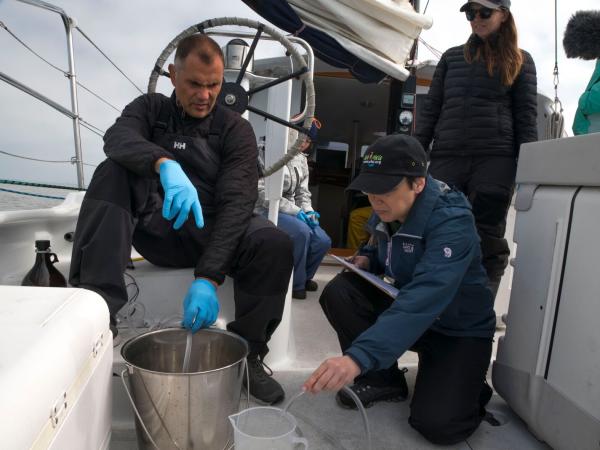Microplastic Monitoring and Science Strategy for San Francisco Bay
2017. Microplastic Monitoring and Science Strategy for San Francisco Bay. SFEI Contribution No. 798. San Francisco Estuary Institute: Richmond, Calif.
Related Projects, News, and Events:
 Microplastic Pollution (Project)
Microplastic Pollution (Project)
The RMP has conducted initial studies of microplastic pollution in San Francisco Bay. Findings from a 2015 screening-level RMP study of microplastic pollution in our Bay show widespread contamination at levels greater than other U.S. water bodies with high levels of urban development, the Great Lakes and Chesapeake Bay. Wildlife consume microplastic particles; ingestion can lead to physical harm, and can expose aquatic organisms to pollutants like PCBs that the plastics have absorbed from the surrounding environment.
 New Microplastic Pollution Study to Launch in San Francisco Bay and Adjacent Ocean Waters (News)
New Microplastic Pollution Study to Launch in San Francisco Bay and Adjacent Ocean Waters (News)
A two-year investigation on microplastic and nanoplastic pollution in San Francisco Bay and the surrounding ocean will launch this month, led by two research centers, the San Francisco Estuary Institute and the 5 Gyres Institute.
 Microplastic Pollution in San Francisco Bay (Project)
Microplastic Pollution in San Francisco Bay (Project)
Plastic pollution is gaining global recognition as a threat to the resilience and productivity of ocean ecosystems. However, we are only just beginning to understand the scope and impacts of microplastic particles (less than 5 mm) on coastal and ocean resources, and the San Francisco Bay Area is no exception. A preliminary study of nine water sites in San Francisco Bay, published in 2016, showed greater levels of microplastics than the Great Lakes or Chesapeake Bay.
 Setting Sail to Find Microplastics in San Francisco Bay (Event)
Setting Sail to Find Microplastics in San Francisco Bay (Event)
5 Gyres and SFEI have begun field work for the SF Bay Microplastics Project, a two year investigation on microplastics in San Francisco Bay and the adjacent marine sanctuaries, in August and September.
This project includes multiple scientific components to develop improved knowledge of microplastic pollution in the Bay Area:
 SFEI Science at International Marine Debris Conference (March 12-16) (News)
SFEI Science at International Marine Debris Conference (March 12-16) (News)
SFEI science will feature prominently at the Sixth International Marine Debris Conference in San Diego next week:
